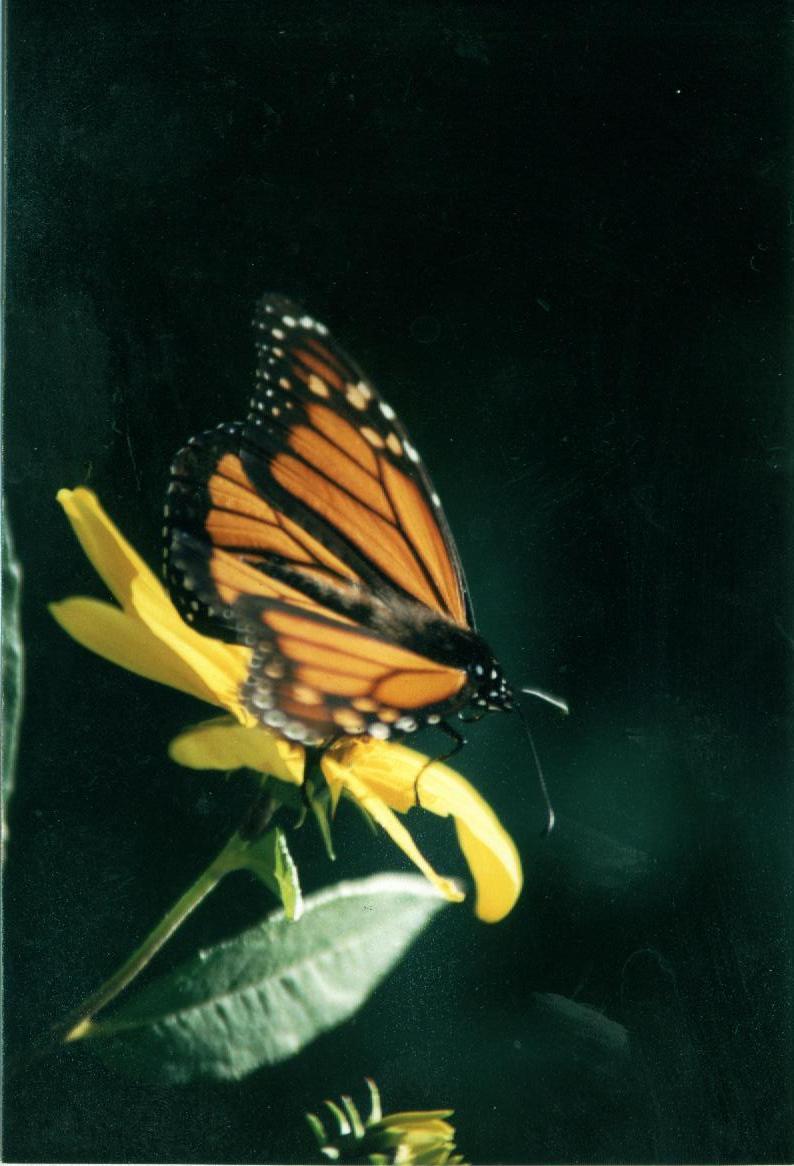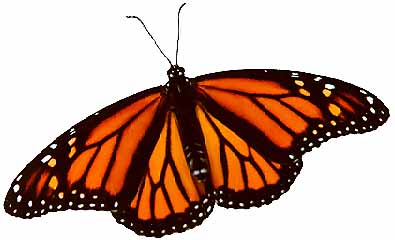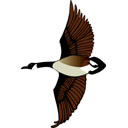

|
|
|
|
 |
 |
|
|
|
|
|
|
|
| Plant a butterfly garden which includes milkweed to provide needed habitat for Monarchs to feed and lay their eggs. |
| Offer several butterfly feeding stations and damp mud or sand watering stations in your yard. |
| Support environmental laws to protect the Monarch in the United States, Canada and Mexico. |
| Contribute to Monarch research, conservation and education projects. |
| Help to protect milkweed, the Monarch's ONLY food source. |
| Participate
in a public program to learn more about Monarchs.
The
Monarch Butterfly Sanctuary Foundation
|
|
The Michoacan Restoration Fund this site's mission is to save the oyamel forests used by monarchs in Mexico Click here to read
The Monarch Watch website's Conservation
article.
|
|
during their journey South? |
| Any State Park on the Lake Michigan Shore has good butterfly viewing areas, as does Lake Michigan's north shore in the Upper Peninsula at Stonington Point and on the Garden Peninsula east of Escanaba. |
| Point Pelee National Park in Ontario, about an hours drive from Detroit, is a great place to see them. It's open daily (check their web site for current times) Admission is about $5.75 (US) for a family; $2.75 for adults; $.65 for students. Call 519-322-2365, 10-5 weekdays and Saturdays. |
| Another good Ontario viewing spot is Holiday Beach Conservation Area, south of Windsor. Farther away are Long Point Provincial Park, about 120 miles east of Point Pelee on Lake Ontario, and Presqu'ile Provincial Park on Lake Ontario near Kingston, which is east of Toronto. |
![]()
![]() Nifty Monarch facts...
Nifty Monarch facts...
* The
longest recorded flight of a monarch butterfly is more than 3,000miles.
The monarch can cover 80 miles a day when migrating.
* The
monarch makes its migratory flight at speeds of up to 11 miles perhour.
It travels 16 or 17 feet above the ground.
* The Monarch has been nominated as the United States National Insect.
* Depending on temperature, the time for
development varies. But an estimated number of days the monarch spends
at each stage of development is:
Egg
3-5 days
Larvae
9-14 days
Chrysalis
8-13 days
Total
20-32 days
* Do you know how to tell a male from a
female Monarch Butterfly?
Male
Female


The male Monarch Butterfly may be easily
distinguished from the female by noting the two highly visable black spots
on the insect's hind wings and the thinner black webbing within the wings.
The female's webbing is thicker and she has no identifying wing spot as
the male does.
Check out these
additional Monarch Butterfly links...

Back
to Wings
Over
Michigan Homepage
This page last updated March 28, 2000